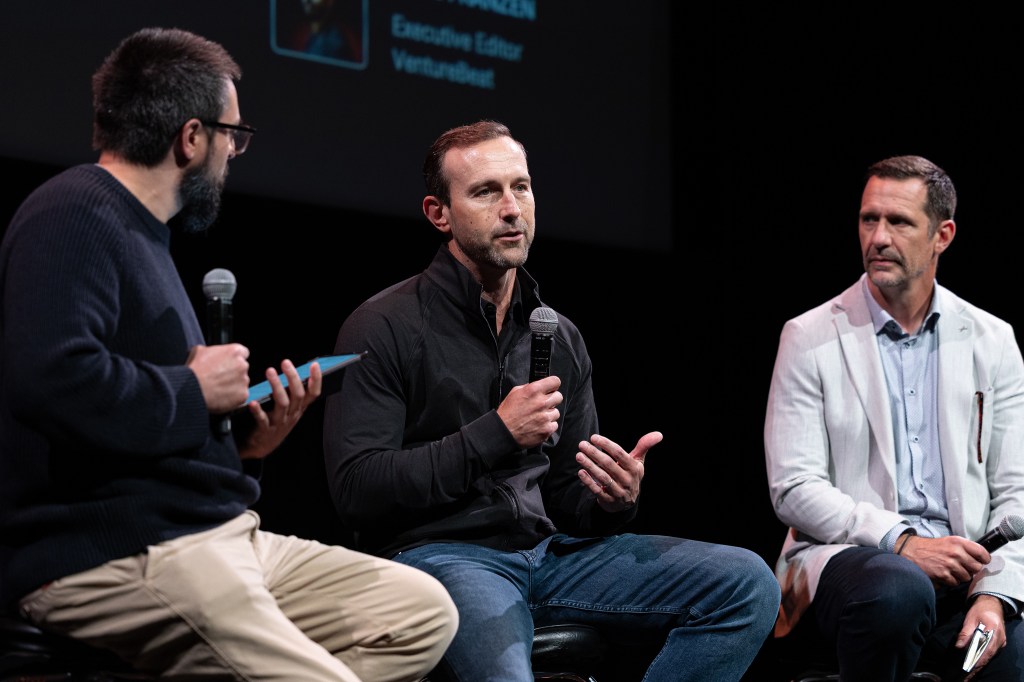Join the event trusted by enterprise leaders for nearly two decades. VB Transform brings together the people building real enterprise AI strategy. Learn more
Among the numerous educational and startlingly insightful panel discussions on AI enterprise integrations featuring industry leaders at VentureBeat’s Transform 2025 conference this week was one led by Google Cloud Platform Vice President and Chief Technology Officer (CTO) Will Grannis and Richard Clarke, Highmark Health’s Senior Vice President and Chief Data and Analytics Officer.
That session, “The New AI Stack in Healthcare: Architecting for Multi-Model, Multi-Modal Environments,” delivered a pragmatic look at how the two organizations are collaborating to deploy AI at scale across more than 14,000 employees at the large U.S. healthcare system Highmark Health (based out of Western Pennsylvania).
In addition, the collaboration has onboarded all these employees and turned them into active users without losing sight of complexity, regulation, or clinician trust.
So, how did Google Cloud and Highmark go about it? Read on to find out.
A Partnership Built on Prepared Foundations
Highmark Health, an integrated payer-provider system serving over 6 million members, is using Google Cloud’s AI models and infrastructure to modernize legacy systems, boost internal efficiency, and improve patient outcomes.
What sets this initiative apart is its focus on platform engineering—treating AI as a foundational shift in how work gets done, not just another tech layer.
Richard Clarke, Highmark’s Chief Data and Analytics Officer, emphasized the importance of building flexible infrastructure early. “There’s nothing more legacy than an employment platform coded in COBOL,” Clarke noted, but Highmark has integrated even those systems with cloud-based AI models. The result: up to 90% workload replication without systemic disruption, enabling smoother transitions and real-time insights into complex administrative processes.
Google Cloud CTO Will Grannis echoed that success begins with groundwork. “This may take three, four, five years,” he said, “but if your data is ready, you can run the experimentation loops and evaluations that make AI useful at scale.”
From Proof-of-Concept to Daily Use
More than 14,000 of Highmark’s 40,000+ employees regularly use the company’s internal generative AI tools, powered by Google Cloud’s Vertex AI and Gemini models.
These tools are applied across a range of use cases — from generating personalized member communications to retrieving documentation for claims processing.
Clarke highlighted a provider-side example involving credentialing and contract verification. Previously, a staff member would manually search multiple systems to verify a provider’s readiness.
Now, AI aggregates that data, cross-checks requirements, and generates tailored output — complete with citations and contextual recommendations.
What drives this high adoption rate? A combination of structured prompt libraries, active training, and user feedback loops. “We don’t just drop tools in and hope people use them,” Clarke explained. “We show them how it makes their work easier, then scale based on what gets traction.”
Agentic Architecture Over Chatbots
One of the most forward-looking themes from the session was the shift from chat-based interactions to multi-agent systems capable of completing tasks end-to-end. Grannis described this as a move away from quick-response chat models toward task synthesis and automation.
“Think less about having a chat interface and more about saying: ‘Go do this, bring it back, and let me decide,’” Grannis said. These agents coordinate multiple models, potentially cascading across different functions—from translation to research to workflow execution.
Highmark is currently piloting single-use agents for specific workflows, and the long-term goal is to embed these within backend systems to perform actions autonomously. This will reduce the need for multiple interfaces or connectors and allow centralized control with broader reach.
Task-First, Not Model-First
Both speakers emphasized a key mental shift for enterprises: stop starting with the model. Instead, begin with the task and select or orchestrate models accordingly.
For example, Highmark uses Gemini 2.5 Pro for long, research-intensive queries and Gemini Flash for quick, real-time interactions. In some cases, even classic deterministic models are used when they better suit the task—such as translating patient communications into multiple languages. As Grannis put it, “Your business processes are your IP. Think about fulfilling a task, and orchestrate models to do that.”
To support this flexibility, Google Cloud is investing in model-routing capabilities and open standards. The recent Agent Protocol initiative, introduced with the Linux Foundation, is designed to promote interoperability and stability in multi-agent environments.
Practical Advice for Enterprise Leaders Across Sectors
For those looking to replicate Highmark’s success, the panelists offered concrete guidance:
Lay the foundation early: Invest in data readiness and system integration now. Even if full AI deployment is years away, the payoff depends on early groundwork.
Avoid building your own foundational models: Unless your business is building models, it’s cost-prohibitive. Focus on orchestration and fine-tuning for specific use cases.
Adopt a platform mindset: Centralize model access and usage tracking. Create a structure that supports experimentation without sacrificing governance.
Start with tasks, not tools: Define the outcome first. Then match it with the model or agent architecture that fits best.
Measure and share: Internal adoption grows when employees see practical results. Track usage, capture success stories, and continuously update libraries of approved prompts and flows.
Design for action, not just information: The future of enterprise AI is task execution, not static insight. Build agents that can trigger real-world actions safely and securely within your systems.
Looking Ahead
While the partnership between Highmark and Google Cloud is still evolving, the progress so far offers a model for others in healthcare—and beyond—who want to build scalable, responsible, and highly usable AI systems.
As Clarke summed up, “It’s not about flashy features; it’s about what actually helps people do their jobs better.”
Enterprise leaders who missed the session can take comfort in this: success in generative AI isn’t reserved for those with the biggest budgets, but for those with the clearest plans, flexible platforms, and the patience to build strategically.


